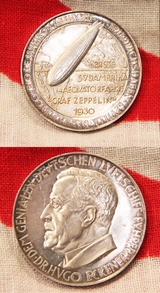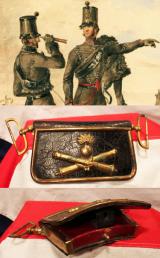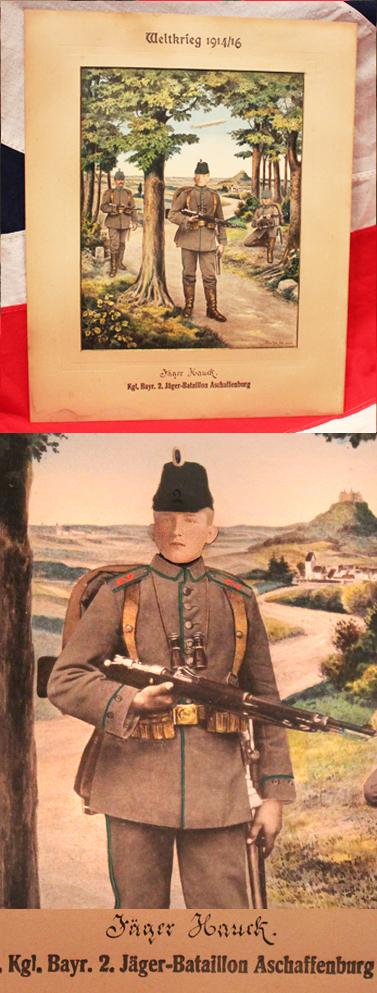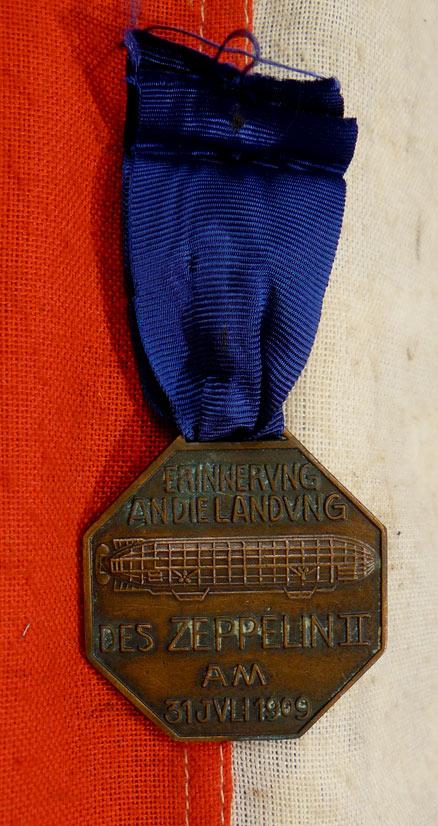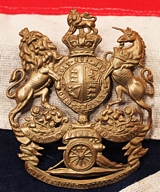A Napoleonic Wars Exploded Solid Shot 12 Pounder Cannon Ball
Battle field recovery. With less than 50% remaining, the ball has hit its target, and split asunder. Within the ball is an air pocket which may explain its split in two on impact. Thomas Blomefield, as Inspector-General of Artillery, introduced a new system of Ordnance from 1784 onwards. His system of gun tubes was based around two standard lengths: that of 17 calibres and that of 13. Seventeen calibre tubes were used for the 'heavy' or 'long' pieces with the 'light' and siege/garrison guns having tubes of 13 calibres. The calibre of all 12-pounders was 4.623 inches.
Blomefield designed three types of 12-pounder, each being specialised towards a particular function. The heavy 12-pounder was used in garrison and siege work; the medium was used in the field and the light for the horse artillery. As the Napoleonic wars progressed, however, the medium 12-pounder became the sole weapon of its class.
The medium 12-pounder had a gun-tube that was 6 feet 6.66 inches in length and it weighed 18.0 cwt; an example cast by John and Henry King in 1795 at the Royal Armouries Museum, Leeds, has a length of 6 feet 3 inches and a weight of 18 cwt 9lb. A medium 12-pounder also survives with its original block-trail carriage in Montreal. The Royal Artillery used 12-pounder field guns in almost all of their major operations and furthermore it was used by the Royal Horse Artillery. See; Wellington's Big Bang: the British 12-pounders By Anthony Leslie Dawson read more
245.00 GBP
Rare German Zeppelin Aerospace Medal 1930 1st South America Brazil flight
German Aerospace medal. Silver Medal 1930 (O. Gl?ckler) First South American cruise of "LZ 127". Head of Dr. H. Eckener left / airship across the Atlantic between Europe and South America. Edge hallmark: PREUSS.STAATSMiNZE.SILBER 900 FINE. 36.2 mm, 24.8 g, small edge error, excellent overall.
LZ 127 Graf Zeppelin (Deutsches Luftschiff Zeppelin 127) was a German passenger-carrying, hydrogen-filled rigid airship that flew from 1928 to 1937. It offered the first commercial transatlantic passenger flight service. Named after the German airship pioneer Ferdinand von Zeppelin, a count (Graf) in the German nobility, it was conceived and operated by Dr. Hugo Eckener, the chairman of Luftschiffbau Zeppelin.
Graf Zeppelin made 590 flights totalling almost 1.7 million kilometres (over 1 million miles). It was operated by a crew of 36, and could carry 24 passengers. It was the longest and largest airship in the world when it was built. It made the first circumnavigation of the world by airship, and the first nonstop crossing of the Pacific Ocean by air; its range was enhanced by its use of Blau gas as a fuel. It was built using funds raised by public subscription and from the German government, and its operating costs were offset by the sale of special postage stamps to collectors, the support of the newspaper magnate William Randolph Hearst, and cargo and passenger receipts.
After several long flights between 1928 and 1932, including one to the Arctic, Graf Zeppelin provided a commercial passenger and mail service between Germany and Brazil for five years. When the Nazi Party came to power, they used it as a propaganda tool. It was withdrawn from service after the Hindenburg disaster in 1937, and scrapped for military aircraft production in 1940. read more
260.00 GBP
A Very Good French 19th Century Crimean War and Franco Prussian War Pouch
Artillery officers pounch with a leather ground and gilt bronze borders and large gilt bronze mountings with wide cross belt hangers. Red morocco leather The cross belt was predominantly used from the 1700s (American Revolutionary War) to the 1840s they were not part of a soldier's equipment in the American Civil War and Anglo-Zulu War/First Boer War.
For most line infantry, skirmishers, light infantry, grenadiers and guard regiments during much of Europe's Age of Gunpowder, either a cross belt or two shoulder belts were worn.[citation needed] One configuration for the belts would be the cartridge box on the right hip and sword scabbard on the left. Such equipment would be attached to the belt at its lowest point, where it rests on the hip. Officers almost never carried muskets or rifles, so they typically wore only one shoulder belt, such as for the pistol cartridge box or for a sabre scabbard. As officers were often aristocratic and used many independent symbols for their family, rank, and command, their uniforms and gear organisation could be highly variable.
For British infantry, the cross belt had a metal belt plate with the regiment of the soldier inscribed on it. We show in the gallery an old print of officers of another regiment but it shows how this pouch was worn read more
365.00 GBP
An Intriguing Zeppelin Warfare Interest Original Bespoke Portrait Photo and Coloured Print of an Imperial German Rifleman in WW1 From The Photographic Wolf Studio of Ulm
A personal portrait photo of a German WW1 rifleman that has been onlaid onto the patented print, of three infantrymen, and him centre from his regiment, the 2nd Jager Battalion Aschaffenberg, Jager [rifleman] Hauck of the Bavarian Infantry in a wooded scene, and his name inscribed below. They were unique patented items that were created for the family members of the soldier for posterity. Photographic studio, A.Wolf of Ulm. 420mm x 525mm. Mounted and unframed. Would look stunning nicely reframed . One of two stunning and rare matching examples of original Great War period Imperial German Zeppelin and infantry warfare prints we acquired that we are selling separately read more
325.00 GBP
An Original Imperial German WW1 Zeppelin Warfare Interest, Bespoke. And Coloured Print of a German Infantryman, Landsturmann Lantz. From the Wolf Photographic Studio of Ulm.
Landwehr Infantry Regt. Nr.123 Ravensburg A personal portrait photo of a German WW1 rifleman that has been onlaid onto the patented print, of three infantrymen, and the subject from his regiment. Imperial German Infantrymen in a wooded scene, with a Zeppelin in the background and his name inscribed below. They were unique patented German photographic records of WW1 that were created for the family members of the soldier for posterity by a photographic studio and print shop. A Wolf of Ulm. 330mm x 450mm. Sold un-mounted and unframed. It would look absolutely stunning nicely reframed. One of two stunning and rare matching examples of original Great War period Imperial German Zeppelin and infantry warfare prints we acquired that we are selling separately. read more
325.00 GBP
A Zeppelin Landing Medal Of 31st July 1909
A scarce and collectable medal from the earliest days of airship travel. In good condition with replacement ribbon. Graf Zeppelin landed for the first time in Frankfurt with his airship "LZ II" on July 31, 1909.
Thousands of spectators cheered so loudly that Graf Zeppelin could not hear the words of greeting from Mayor Adickes. To this day, the Graf Zeppelin memorial near the future Rebstockpark serves as a reminder of his pioneering work. The Rebstock became the home of the flight pioneers. Pilots gathered for the first international flying competition during the "Flyer week" as a part of the "International Airship Exposition" (ILA) in October 1909. The German Airship Transportation company (DELAG) opened the "Airship Harbor Frankfurt" on the Rebstock grounds on March 4, 1912, using the remodeled manor house as headquarters. The festive event was celebrated with the arrival of the dirigible "Viktoria Louise". The "Frankfurt Airport" was opened on the grounds of the Rebstock in August 1926. By 1928, this was the second largest airport in Germany, after Berlin. read more
195.00 GBP
Victorian First Lanarkshire Artillery Volunteers Helmet Plate
Victorian other ranks helmet plate of the 1st Lanarkshire Artillery Volunteers.
A fine scarce white metal example of a home service helmet plate, being of a Victoria crowned royal arms with a scroll below inscribed First over a gun which is resting resting over another scroll inscribed Lanarkshire Artillery Volunteers
There are three fixing loops to the reverse. The 1st Lanarkshire Artillery Volunteers were formed in 1859 as a response to a French invasion threat. Its units fought at Gallipoli and in Palestine during World War I, and in Normandy and North West Europe during World War II.
C1878-1900 Excellent Condition. read more
295.00 GBP
WW1 Imperial German Officer's sword 73rd Reserve Regiment. Company 16 Sword 1
A gilt brass-bronze hilt with silver wire bound grip and folding shell guard, maker marked blade by Wayersberg Kirschbaum, Solingen. Regimentally marked with the Kiaser’s ordnance inspection stamp. The 19th Reserve Division, 37th Reserve Brigade, 73rd reserve infantry regiment, began the war under command of Generalleutnant Max von Bahrfeldt on the Western Front, participating in the opening German offensive which led to the Allied Great Retreat and ended with the First Battle of the Marne. Thereafter, the division remained in the line on the Aisne and in the Champagne. From May 1915 to March 1916, the division fought in Upper Alsace. It then fought in the Battle of Verdun until July, when it went into the Argonne Forest. In October 1916, it saw action in the later phases of the Battle of the Somme. In April 1917, the division fought in the Second Battle of the Aisne, also known as the Third Battle of Champagne. In May, it was sent to the Eastern Front, and fought around Riga until September. It then returned to the Western Front, where it saw action in the Battle of Passchendaele. It was back in the trenchlines at Verdun from October 1917 to April 1918. In August–September 1918, the division faced the French and American Oise-Aisne Offensive. It remained in the line until war's end. Allied intelligence rated the division as first class. No scabbard read more
395.00 GBP
Very Rare Company Of Watermen, River Thames, 'Tudor' Barge Fork Circa 1530
Large 'Y' shaped head and old oak haft. It bears two large letters stamped in the iron ' T & M'. These are likely for a Barge Company of Waterman mark. We had another about 10 years ago bearing the same company mark and these historical artifacts are now really rare. Recovered from the Thames near London Bridge. In the 16th Century the Company of Watermen were the equivalent to today’s cabbies. Created by an Act of Parliament in 1556 and their trade was carefully licensed. They would ply for hire from designated locations along the Thames, with the cry of ‘Oars! Oars!’
When the watermen were not transporting people they would turn their hand to salvage and found a brisk trade in finding bodies, either suicides or those who?d accidentally drowned or been murdered. By a curious quirk of history, the origins of which are now lost, bodies were almost always landed on the south side of the river because the authorities would pay a shilling for a body landed in Southwark but only sixpence for one landed on the north bank. Clearly waterborne cabbies were not averse to ‘going south of the river’ in those days.
One on the best trips for the Watermen was from the City to as far up river as Hampton Court.The trade was not without its dangers; if you wanted to travel downstream below London Bridge you risked life and limb. A major feature of London Bridge was the effect it had on the Thames. The location of the bridge?s 19 timber pier supports (called starlings) was determined by riverbed conditions and this meant that they were varied in spacing across the river. Consequently, the arch spans varied in size too and boats navigating the arches encountered different currents and river conditions at each one. Some were more dangerous than others. Over the years, boatmen christened the arches with various names, such as Gut, Lock and Long Entry. Navigating through these arches in a boat could be very dangerous because the closeness and number of starlings backed up the river water, creating rapids. In some places the drop in water height from one side of the bridge to the other was more than the height of a man. Many people lost their lives ‘shooting’ the bridge and ‘Drowned at the bridge’ became a common entry in the registers at nearby graveyards, but most Londoners took Cardinal Wolsey's example. On his frequent visits to Greenwich to see Henry VIII, he would have his barge stopped above the bridge and get out and travel to Billingsgate by mule, where he would rejoin his barge, providing it had successfully negotiated the rapids. The barge fork was used to push a barge away from an obstruction, or for pushing off from the river bank or jetty. The last picture is of a statue of the Martyr John Roche a Thames Waterman, Martyred at Tyburn in 1588, who is mounted St Etheldreda’s Church in Ely Place, London, along the North and South walls, alongside his fellow 7 Martyrs. Fork head 13.1 inches long by 6.25 inches across. Total length around 5+ foot. read more
850.00 GBP
A Most Interesting and Intriguing 18th Century Small Sword, circa 1770, with a Trefoil Colichemarde blade
Gilt hilt with numerous classical representations of male and female figures. The figures are intriguing to say the least, upon the double shell guard there are a pair of male and female figures, each holding classical noble sceptres, the male figure has a somewhat Egyptian hair style and a tall crown, but also bat type wings. The pommel has an embossed portrait bust of a classical king, and the quillon block has two classical figures, both with staff, one with a cloak one without, but intriguingly and rarely seen, the cloakless male figure has his [obvious] full compliment of 'gentleman's marital equipment' [see photo], which is most rare to see on antique weaponry. The sword bears a trefoil colichemarde blade that is beautifully inlaid with a 1.75 inch panel of copper-gold alloy in a geometric pattern. The grip is multi wire bound over wood that is a tad spaced now through age. The small sword or smallsword is a light one-handed sword designed for thrusting which evolved out of the longer and heavier rapier of the late Renaissance. The height of the small sword's popularity was between mid 17th and late 18th century. It is thought to have appeared in France and spread quickly across the rest of Europe. The small sword was the immediate predecessor of the French duelling sword (from which the épée developed) and its method of use—as typified in the works of such authors as Sieur de Liancour, Domenico Angelo, Monsieur J. Olivier, and Monsieur L'Abbat—developed into the techniques of the French classical school of fencing. Small swords were also used as status symbols and fashion accessories; for most of the 18th century anyone, civilian or military, with pretensions to gentlemanly status would have worn a small sword on a daily basis.
The small sword could be a highly effective duelling weapon, and some systems for the use of the bayonet were developed using the method of the smallsword as their foundation, (including perhaps most notably, that of Alfred Hutton).
The highly distinctive colishmarde blades appeared in 1680 and were popular during the next 40 years at the royal European courts. The colichemarde bladed swords had a special popularity with the officers of the French and Indian War period. Even George Washington had a very fine one just as this example.
The colichemarde descended from the so-called "transition rapier", which appeared because of a need for a lighter sword, better suited to parrying. It was not so heavy at its point; it was shorter and allowed a limited range of double time moves.The colichemarde in turn appeared as a thrusting blade too and also with a good parrying level, hence the strange, yet successful shape of the blade.
This sword appeared at about the same time as the foil. However the foil was created for practising fencing at court, while the colichemarde was created for dueling. With the appearance of pocket pistols as a self-defense weapon, the colichemardes found an even more extensive use in dueling.
This was achieved thanks to a wide forte (often with several fullers), which then stepped down in width after the fullers ended.The result of this strange shape was a higher maneuverability of the sword: with the weight of the blade concentrated in one's hand it became possible to maneuver the blade at a greater speed and with a higher degree of control, allowing the fencer to place a precise thrust at his/her adversary. The knuckle bow has been removed by design and there is no sharp tip point remaining to the overall russetted blade.
Overall 26.75 inches long overall, hilt 5.25 inches. read more
595.00 GBP



